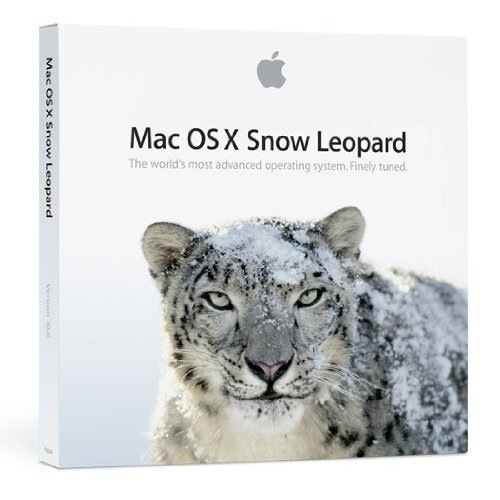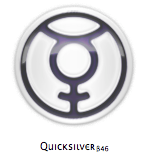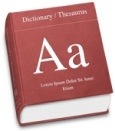How to bring MacOS X to mind: some tips
This article was written for all the good people of the world,
but was originally conceived as an answer to questions from members of the Ufriends group.
For a long time I promised to make something like a short list of additional programs and settings that make your Mac better. They make life easier for me and save time. There are no detailed step-by-step instructions in this article - but the information is certainly enough to make the setup quick and safe. In any case - think, so to speak, with your head before any action. This, of course, applies not only to MacOS X setup.

Introduction
Why set up a MacOS that works so well? Those who had a chance to work on this operating system for some time know: it is simply installed out of the box and is more convenient for work than Windows that is carefully licked and bent under you. Where else to tune something? Is not the best the enemy of the good? The answer is simple: add to the perfection of the work of engineers of the apple company the best that was created by the Free Community - and you will get the best of the operating systems that have ever been created by mankind. Following the recommendations of this article, you can:
Install and learn QuickSilver.
 The default search engine, Spotlight, is installed on the system. It is good for finding files, but not good for running programs or operations with found files. Open gmail at the touch of a button, launch the program you just installed, select a dozen pictures from different directories and change their size in one go, have the history of your Clipboard on hand - these are just a small part of the functionality you get. QuickSilver is the main non-standard program. I highly recommend spending an hour studying it. This hour will return you dozens of hours of saved time and convenience that is not available in any other environment. There are no alternatives yet. Google quick search box - This is an attempt to get to the functionality of QuickSilver, but so far it’s very, very crude.
The default search engine, Spotlight, is installed on the system. It is good for finding files, but not good for running programs or operations with found files. Open gmail at the touch of a button, launch the program you just installed, select a dozen pictures from different directories and change their size in one go, have the history of your Clipboard on hand - these are just a small part of the functionality you get. QuickSilver is the main non-standard program. I highly recommend spending an hour studying it. This hour will return you dozens of hours of saved time and convenience that is not available in any other environment. There are no alternatives yet. Google quick search box - This is an attempt to get to the functionality of QuickSilver, but so far it’s very, very crude.
Customize Dictionary
 Program DictionaryMacOS is more convenient and powerful than it seems at first glance. She knows how to work with a variety of dictionaries, Wikipedia in different languages, and thus, being properly configured, turns into a universal encyclopedia for you. The answer to any question, the translation of any word becomes a matter of seconds, especially if you put it on a hotkey in QuickSilver. In addition, reading a dictionary entry, you will notice that every word or key that is in other dictionaries is highlighted! As a result, the whole text becomes saturated with links, which makes reading a dictionary article extremely convenient. Another important point: by setting the Lookup in Dictionary button in SystemPreferences / KeyboardShortcuts to, for example, F1, you get the opportunity to read an article on the Internet, hover over an unknown word, and by clicking this same F1, immediately get the translation in a pop-up window. This functionality, however, will not be available in Firefox - the Fire Fox uses a non-standard API. Many installations already have a shortcut for this operation: Cmd-Ctrl-D.
Program DictionaryMacOS is more convenient and powerful than it seems at first glance. She knows how to work with a variety of dictionaries, Wikipedia in different languages, and thus, being properly configured, turns into a universal encyclopedia for you. The answer to any question, the translation of any word becomes a matter of seconds, especially if you put it on a hotkey in QuickSilver. In addition, reading a dictionary entry, you will notice that every word or key that is in other dictionaries is highlighted! As a result, the whole text becomes saturated with links, which makes reading a dictionary article extremely convenient. Another important point: by setting the Lookup in Dictionary button in SystemPreferences / KeyboardShortcuts to, for example, F1, you get the opportunity to read an article on the Internet, hover over an unknown word, and by clicking this same F1, immediately get the translation in a pop-up window. This functionality, however, will not be available in Firefox - the Fire Fox uses a non-standard API. Many installations already have a shortcut for this operation: Cmd-Ctrl-D.
Here is my list of dictionaries, but I'm a modest guy. I know a people who have this list more than four times.
More you will never open the Wikipedia site. A correctly tuned Dictionary realizes the long-standing dream of any creative person - the presence on the bookshelf of the Great Universal Dictionary and the Encyclopedia of All That Is, the size of a volume of Akhmatova.
Internet: communicate and download
Everything is simple here: we need several utilities to work on the global network. Which ones is a matter of your taste. I use:
Format Wars
For many years, Apple has been beating tusks with Microsoft on the subject of support for media file formats. You and I suffer from this no less than the nerves of the heads of marketing departments of these companies. The fact remains: by default, these OSes do not know how to work with media content in the format of competitors. As a result, you and I have to get out. I get out like this:
I must say right away: my main program for working with media content is, of course, iTunes. I prefer to digitize music in Apple Loseless format, and video - in one of the standards supported by Mac, rather than keep a bunch of AVI-shek on the disk.
Files and directories
I like the original Mack Finder, and where it is missing - you can use the command line. For fans of Norton Commander, such file managers can recommend cross-platform muCommander . For burning CDs and DVDs, I prefer the Burn program - it seems to me much more convenient than the standard one.
Windows on your desktop
I useCrossOver , and this is the only paid application in this review, but it costs its money. The application is a very high-quality commercial port of Wine. Even in Counter Strike Source you can drive.
Still some tips
MacOS X is full of amenities and hidden features that you need to learn as they appear in your life.
Conclusion
Well, that's all for now. If you are interested, ask questions. In case of additional interest, I will write more. MacOS X - OSes, which is not a panacea for all ills. It can, like any software, fail, hang and annoy. But she does this extremely rarely, and the level of convenience offers so great that there are no alternatives, in my opinion.
PS
And do not tell me about Windows Seven. You are welcome.
[The original of my article is here]
but was originally conceived as an answer to questions from members of the Ufriends group.
For a long time I promised to make something like a short list of additional programs and settings that make your Mac better. They make life easier for me and save time. There are no detailed step-by-step instructions in this article - but the information is certainly enough to make the setup quick and safe. In any case - think, so to speak, with your head before any action. This, of course, applies not only to MacOS X setup.

Introduction
Why set up a MacOS that works so well? Those who had a chance to work on this operating system for some time know: it is simply installed out of the box and is more convenient for work than Windows that is carefully licked and bent under you. Where else to tune something? Is not the best the enemy of the good? The answer is simple: add to the perfection of the work of engineers of the apple company the best that was created by the Free Community - and you will get the best of the operating systems that have ever been created by mankind. Following the recommendations of this article, you can:
- save significant time on the automation of frequently repeated actions (personally, I won about 10 hours a week, I do not exaggerate)
- make work on your Mac more convenient
- focus more on the creative part of the work
- forget about the format war
- ???
- PROFIT!
Install and learn QuickSilver.
 The default search engine, Spotlight, is installed on the system. It is good for finding files, but not good for running programs or operations with found files. Open gmail at the touch of a button, launch the program you just installed, select a dozen pictures from different directories and change their size in one go, have the history of your Clipboard on hand - these are just a small part of the functionality you get. QuickSilver is the main non-standard program. I highly recommend spending an hour studying it. This hour will return you dozens of hours of saved time and convenience that is not available in any other environment. There are no alternatives yet. Google quick search box - This is an attempt to get to the functionality of QuickSilver, but so far it’s very, very crude.
The default search engine, Spotlight, is installed on the system. It is good for finding files, but not good for running programs or operations with found files. Open gmail at the touch of a button, launch the program you just installed, select a dozen pictures from different directories and change their size in one go, have the history of your Clipboard on hand - these are just a small part of the functionality you get. QuickSilver is the main non-standard program. I highly recommend spending an hour studying it. This hour will return you dozens of hours of saved time and convenience that is not available in any other environment. There are no alternatives yet. Google quick search box - This is an attempt to get to the functionality of QuickSilver, but so far it’s very, very crude. - download
- watch the training video from the creator of the program
- interested people read the documentation
- access clipboard history
- access to Shelf (another awesome thing in QuickSilver)
- Dictionary (see below)
- Google Mail - Separate Work and Home
- Google docs
- Google calendar
- Google wave
- Address book
- muCommander
- Finder
Customize Dictionary
 Program DictionaryMacOS is more convenient and powerful than it seems at first glance. She knows how to work with a variety of dictionaries, Wikipedia in different languages, and thus, being properly configured, turns into a universal encyclopedia for you. The answer to any question, the translation of any word becomes a matter of seconds, especially if you put it on a hotkey in QuickSilver. In addition, reading a dictionary entry, you will notice that every word or key that is in other dictionaries is highlighted! As a result, the whole text becomes saturated with links, which makes reading a dictionary article extremely convenient. Another important point: by setting the Lookup in Dictionary button in SystemPreferences / KeyboardShortcuts to, for example, F1, you get the opportunity to read an article on the Internet, hover over an unknown word, and by clicking this same F1, immediately get the translation in a pop-up window. This functionality, however, will not be available in Firefox - the Fire Fox uses a non-standard API. Many installations already have a shortcut for this operation: Cmd-Ctrl-D.
Program DictionaryMacOS is more convenient and powerful than it seems at first glance. She knows how to work with a variety of dictionaries, Wikipedia in different languages, and thus, being properly configured, turns into a universal encyclopedia for you. The answer to any question, the translation of any word becomes a matter of seconds, especially if you put it on a hotkey in QuickSilver. In addition, reading a dictionary entry, you will notice that every word or key that is in other dictionaries is highlighted! As a result, the whole text becomes saturated with links, which makes reading a dictionary article extremely convenient. Another important point: by setting the Lookup in Dictionary button in SystemPreferences / KeyboardShortcuts to, for example, F1, you get the opportunity to read an article on the Internet, hover over an unknown word, and by clicking this same F1, immediately get the translation in a pop-up window. This functionality, however, will not be available in Firefox - the Fire Fox uses a non-standard API. Many installations already have a shortcut for this operation: Cmd-Ctrl-D.Here is my list of dictionaries, but I'm a modest guy. I know a people who have this list more than four times.

More you will never open the Wikipedia site. A correctly tuned Dictionary realizes the long-standing dream of any creative person - the presence on the bookshelf of the Great Universal Dictionary and the Encyclopedia of All That Is, the size of a volume of Akhmatova.
- learn how to convert and add custom dictionaries (eng)
- add dictionaries
- customize the application itself
- customize SystemPreferences / KeyboardShortcuts / Lookup in Dictionary
Internet: communicate and download
Everything is simple here: we need several utilities to work on the global network. Which ones is a matter of your taste. I use:
- CyberDuck for working with FTP
- Transmission for download from torrents
- Audium as the main messenger (it can work with different instant messaging systems, from icq to Skype)
Format Wars
For many years, Apple has been beating tusks with Microsoft on the subject of support for media file formats. You and I suffer from this no less than the nerves of the heads of marketing departments of these companies. The fact remains: by default, these OSes do not know how to work with media content in the format of competitors. As a result, you and I have to get out. I get out like this:
- XLD to transcode audio files
- VideoMonkey to transcode video
- VLC for playing media content
- Perian as an extended set of codecs
I must say right away: my main program for working with media content is, of course, iTunes. I prefer to digitize music in Apple Loseless format, and video - in one of the standards supported by Mac, rather than keep a bunch of AVI-shek on the disk.
Files and directories
I like the original Mack Finder, and where it is missing - you can use the command line. For fans of Norton Commander, such file managers can recommend cross-platform muCommander . For burning CDs and DVDs, I prefer the Burn program - it seems to me much more convenient than the standard one.
Windows on your desktop
I useCrossOver , and this is the only paid application in this review, but it costs its money. The application is a very high-quality commercial port of Wine. Even in Counter Strike Source you can drive.
Still some tips
MacOS X is full of amenities and hidden features that you need to learn as they appear in your life.
- study the standard hot keys , enable their use in your main applications - save time, do not drag the mouse aimlessly across the screen
- did you know that a space in the Finder shows the contents of the current file, and an Alt-space does the same in full-screen mode
- explore the possibilities of Dashboard - it is an amazingly convenient service
- be sure to configure Spaces
Conclusion
Well, that's all for now. If you are interested, ask questions. In case of additional interest, I will write more. MacOS X - OSes, which is not a panacea for all ills. It can, like any software, fail, hang and annoy. But she does this extremely rarely, and the level of convenience offers so great that there are no alternatives, in my opinion.
PS
And do not tell me about Windows Seven. You are welcome.
[The original of my article is here]
